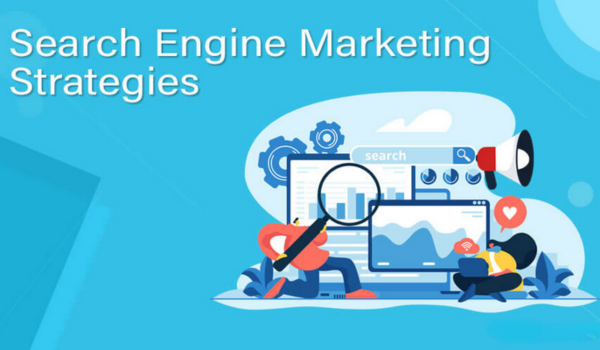Introduction
A. This section introduces the topic of search engine marketing (SEM) and highlights its significance for businesses looking to enhance their online presence and drive traffic to their websites through search engines like Google, Bing, etc.
Strategy 1: Keyword Research and Targeting
A. Keyword research involves identifying the terms and phrases that potential customers are likely to search for. Targeting the right keywords is crucial for ensuring that your ads appear in relevant search results and reach your target audience effectively.
Strategy 2: Compelling Ad Copywriting
A. Ad copywriting refers to the process of crafting persuasive and engaging text for your search engine ads. Compelling ad copy can significantly impact click-through rates (CTRs) and ultimately drive more traffic to your website.
Strategy 3: Bid Management and Budget Optimization
A. Bid management involves adjusting your keyword bids to maximize the return on investment (ROI) of your search engine marketing campaigns. Budget optimization focuses on allocating your advertising budget strategically to ensure that you get the most out of your advertising spend.
Strategy 4: Ad Extensions Utilization
A. Ad extensions are additional pieces of information that can be included with your search ads to provide more context and encourage users to click. Utilizing ad extensions can improve ad visibility, CTRs, and overall campaign performance.
Strategy 5: Landing Page Optimization
A. Landing page optimization involves designing and optimizing the web pages that users land on after clicking on your ads. A well-optimized landing page can enhance user experience, increase conversions, and ultimately improve the effectiveness of your SEM campaigns.
Strategy 6: Geographic Targeting
A. Geographic targeting allows advertisers to show their ads to users in specific locations. By targeting relevant geographic areas, businesses can tailor their messaging and offers to local audiences, leading to more relevant and effective advertising campaigns.
Strategy 7: Remarketing Campaigns
A. Remarketing involves targeting users who have previously visited your website or interacted with your brand but did not convert. Remarketing campaigns allow businesses to re-engage these users with tailored ads, encouraging them to return and complete a desired action, such as making a purchase or filling out a form.
Strategy 8: Mobile Optimization
A. With the increasing use of mobile devices, optimizing search engine marketing campaigns for mobile is essential. This includes creating mobile-friendly ads and landing pages that provide a seamless experience for users on smartphones and tablets.
Strategy 9: Performance Tracking and Analytics
A. Tracking and analyzing the performance of your SEM campaigns is crucial for understanding what’s working and what’s not. By monitoring key metrics and using analytics tools, businesses can make data-driven decisions to optimize their campaigns and improve results over time.
Strategy 10: Continuous Testing and Optimization
A. SEM is an iterative process that requires ongoing testing and optimization to achieve optimal results. By continuously testing different elements of your campaigns and making data-driven optimizations, you can refine your strategies and maximize the effectiveness of your SEM efforts.
Conclusion
A. This section summarizes the 10 effective SEM strategies covered in the blog post and emphasizes the importance of implementing them to achieve success in SEM. It encourages readers to take action and apply these strategies to their own SEM campaigns for improved results.















